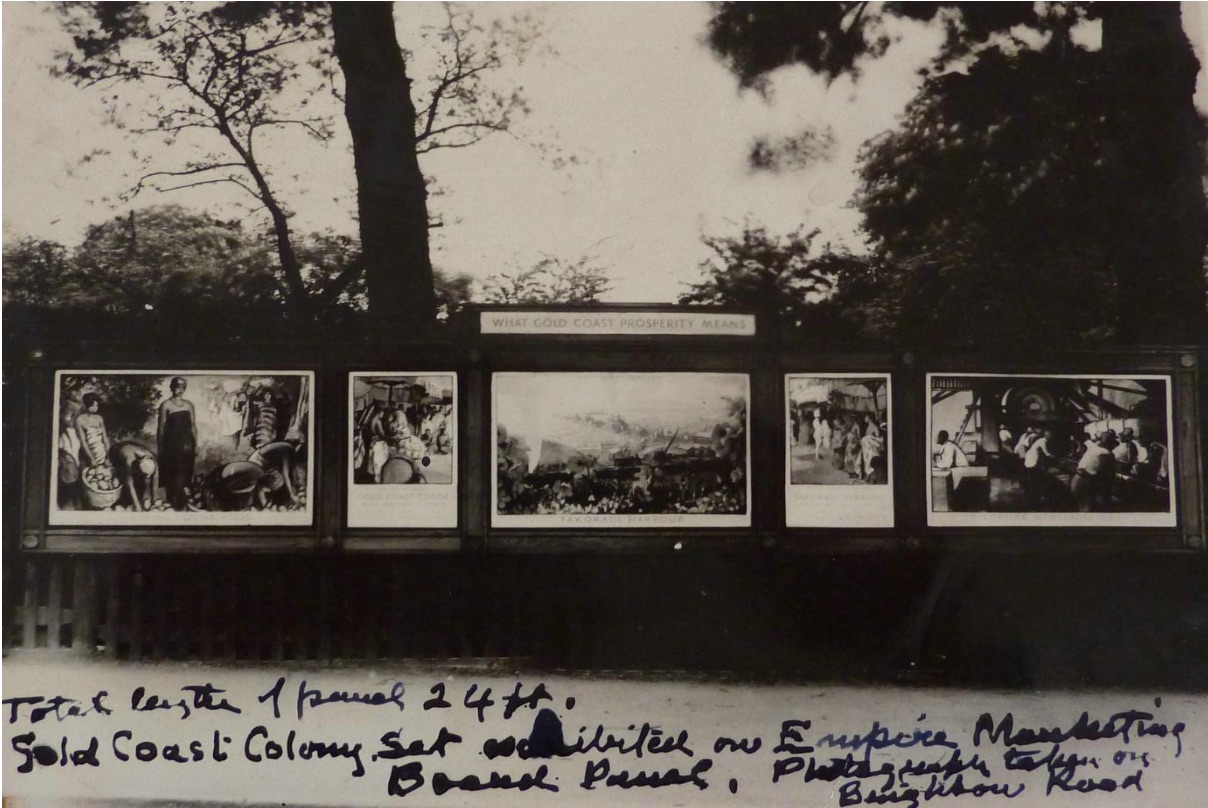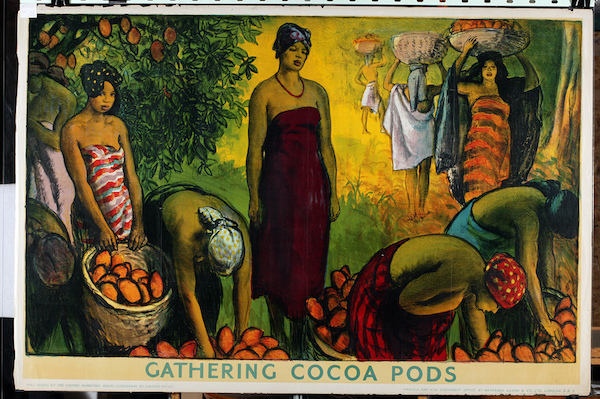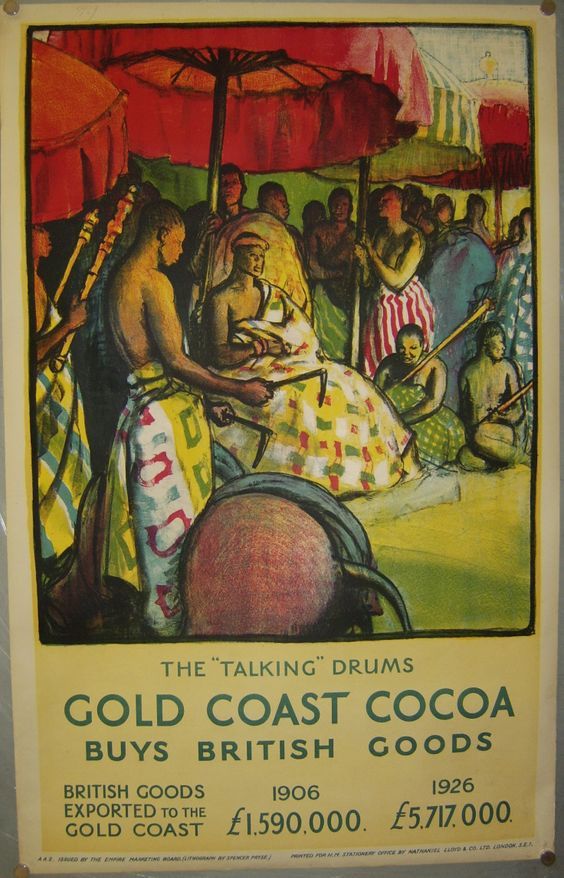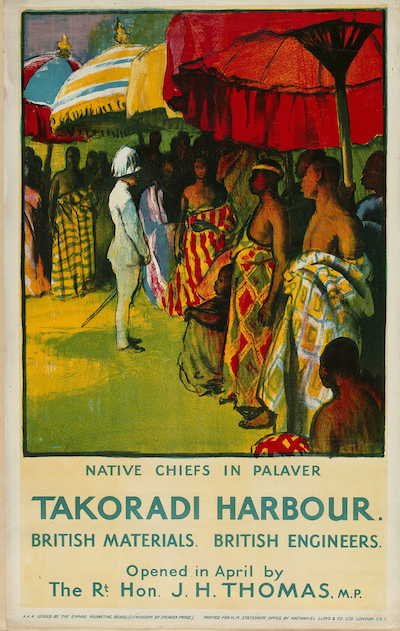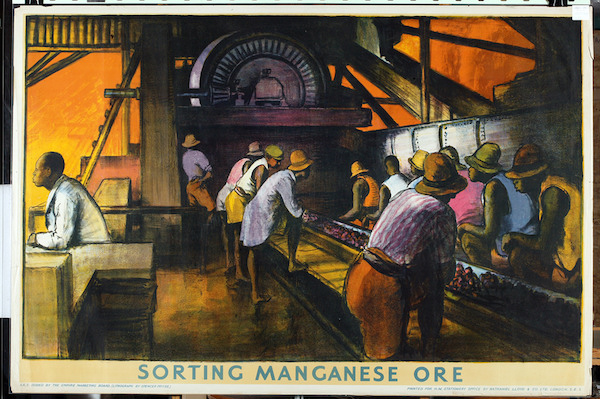In writing about Lilian Dring, I returned to the subject of Empire Marketing Board poster hoardings with their fantastic and unique layout
It’s been a while since I considered this properly , so I set off into the internet to see if there was new research and the change to find out more. I have now returned, clutching information.
The first thing to tell is that there were lots of hoardings, and they were all over the place. By 1933, the EMB had their specially designed frames in 1,700 locations, which were always in towns and cities to maximise the number of people who saw them.
Cheap ‘solus’ sites were preferred, at railway termini and outside factory gates, government and municipal buildings, avoiding the need to book space on ordinary, commercial hoardings.
But these mammoth poster boards weren’t the only means of publicity. Much like government posters in the Second World War, the Empire Marketing Board put posters wherever they could. They produced window bills and cards that could be placed in car windows, Scouts and Guides were recruited to distribute their material, and posters were sent to schools, post offices and theatres. In many ways the poster campaign does look like a dress rehearsal for the poster onslaught of the war.
But the most exciting thing I found is this picture. It’s an actual photograph of an actual Empire Marketing Board poster site at work – taken, it seems, by an individual rather than for publicity purposes.
Clearly an interested individual though, judging by the notes about length and the individual posters.
The series on display here, about the Gold Coast (now Ghana), and how it was being improved by the actions of the British Empire, is the work of Gerald Spenser Pryce.
Three of the posters are in the collection at Manchester City Art Gallery who have, in a pleasing act of openness, put all of their Empire Marketing Board collection up on Flickr.
I’ve managed to find a fourth on Pinterest, so am currently only missing the central image, but the photograph shows the title which is Takoradi Harbour, and it seems to be a wide shot of the harbour buildings, which, the next poster tells us have been bought by the British.
What’s really interesting about seeing this set in situ is it makes me realise how the viewer is meant to interpret the posters.
Many of the Empire Marketing Board’s artists turned the set of posters into one giant display, like the Paul Nash above, or this Austin Cooper.
Both of these connect the whole design across the poster, and are conveying a very simple idea about how to shop.
Pryce’s message is more complex, and so is the way his series of designs work. Instead of being unitary, the viewer is meant to read them from left to right, taking the sequence of posters as though it were a comic strip.
So as well as all the facts about Empire Trade and harbour building, they are also telling a story. This begins with the hard and basic labour of harvesting cocoa pods, and we see a relatively un-modern society which communicates by the talking drums. But then the British arrive and build a modern new harbour, and the Empire, in the form of an officer in white tropical uniform with a particularly unfeasible hat, now talks to the native chiefs as well.
The result, in the final poster, is that the inhabitants of the Gold Coast, the lucky recipients of the benefits of Empire, have been brought into the modern, mechanised world.
They are so lucky that they have also acquired hats, and more Western clothing, along, it seems with a managerial class – seen on the far left of the poster.
Now, generally, my feeling has been that the advertising of the Empire Marketing Board has received more flack than it deserved. Yes it was the product of a colonial and unequal society, and yes some of its posters were undeniably racist. But many of its posters appear to be more neutral and egalitarian – and this is particularly true of the more modern sets of posters, by people like Cooper and McKnight Kauffer which are the ones, inevitably, which I and other design historians tend to gravitate, because we are like crows and like shiny glittery things.
This series makes me more uncomfortable, because it’s dramatising the underlying ideology of empire and of empire trade. It’s easy to dismiss simple racism when it crops up in the images, because we don’t do that any more. But Spencer Pryce’s posters tell of a more subtle process, of exploitation and asset stripping, which is in some ways harder to look at.
The lesson is, look harder at the things which we think are unworthy, or which don’t fit our narrative of modernity. Sometimes there are more interesting things to be learned than the bright slogans of modernism can show us.
This post is brought to you almost entirely by firstly a paper called ‘Food and the Empire Marketing Board in Britain, 1926-1933’ by Peter Atkins, and also by a PhD thesis written by Tim Buck. He’s the person who found the picture, but I can’t trace him anywhere, so I hope he doesn’t mind me borrowing it. His thesis also suggests that Spencer Pryce may have had some reservations himself about the process of modernisation when he undertook a research visit to Africa, but that’s a whole other kettle of fish. The final poster picture comes from Books And Things, via Pinterest.

